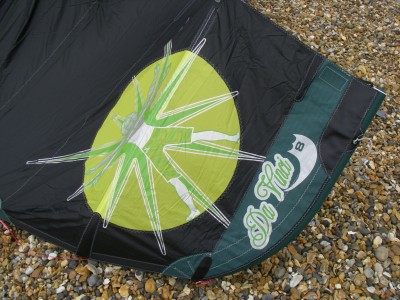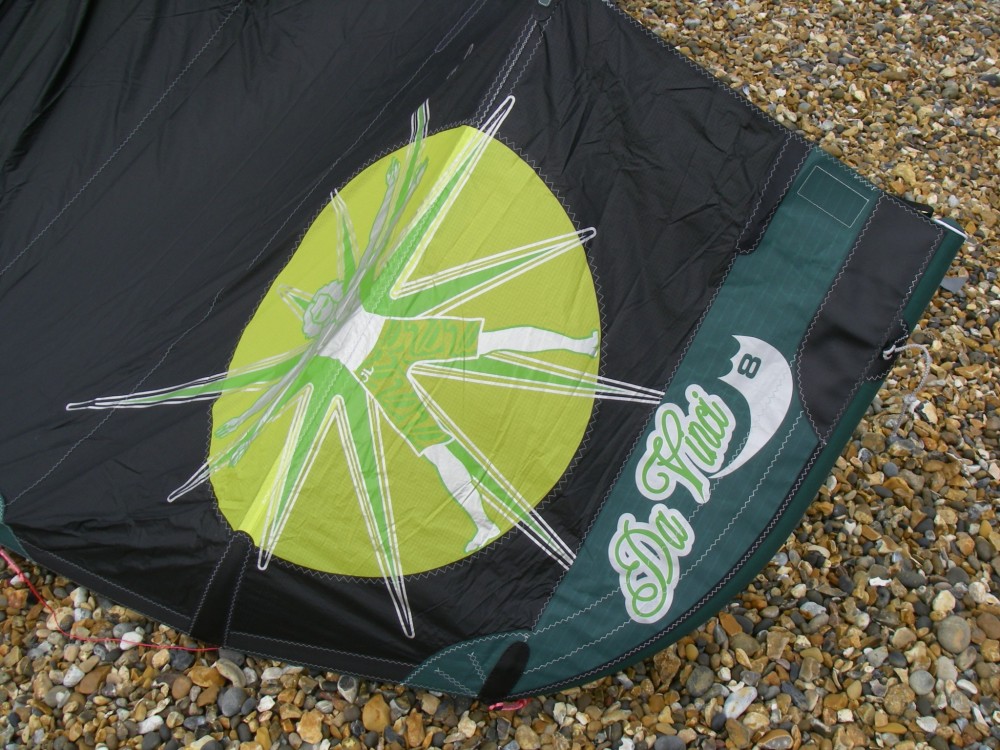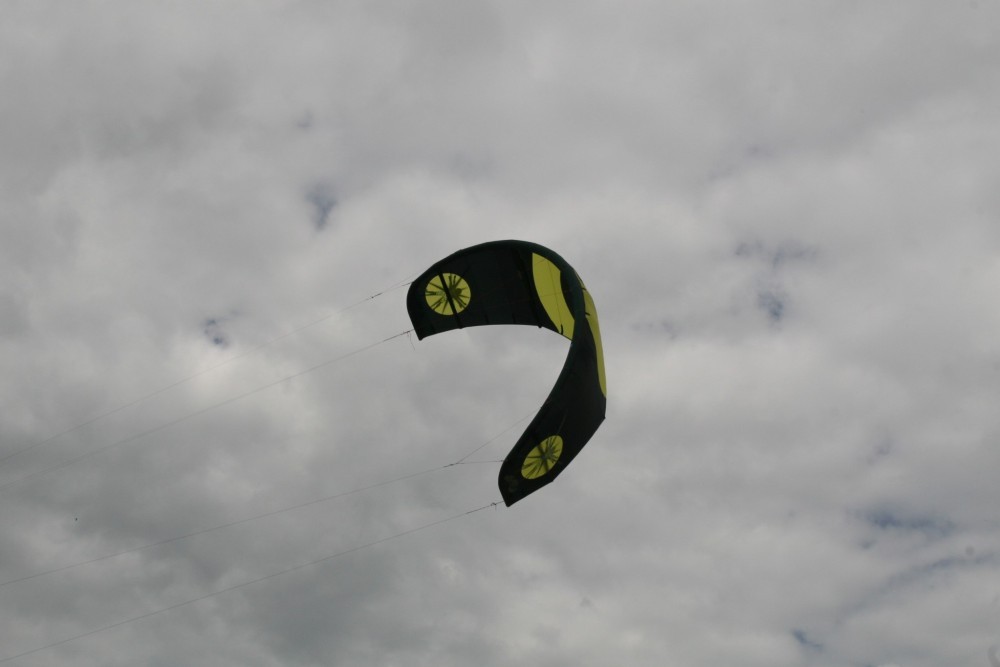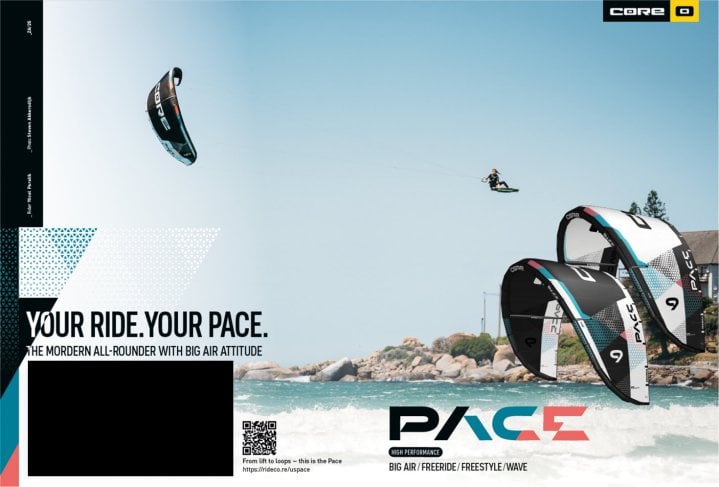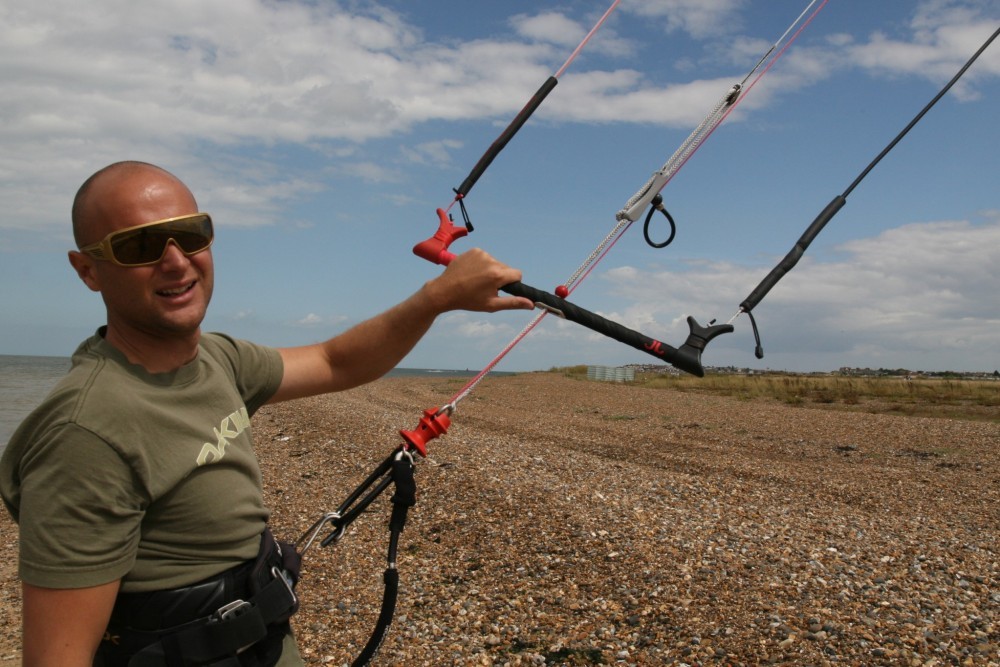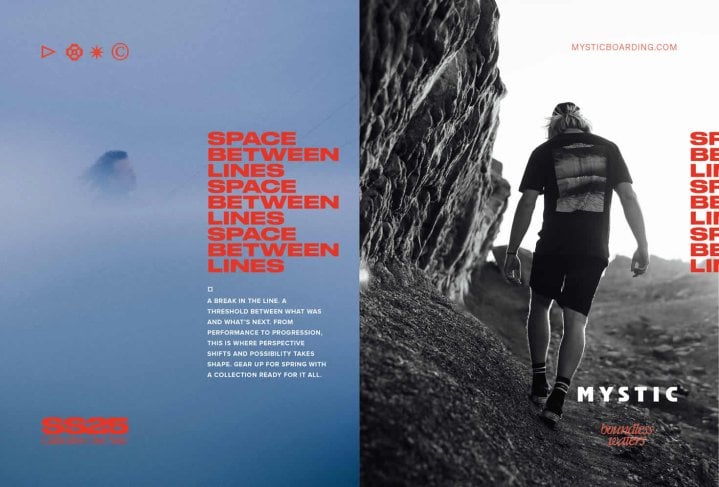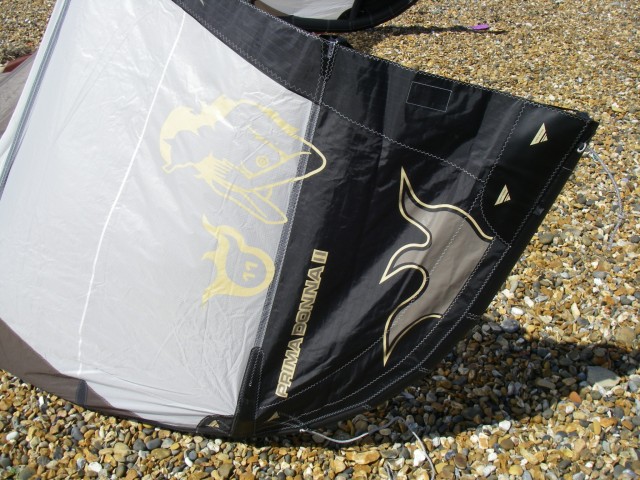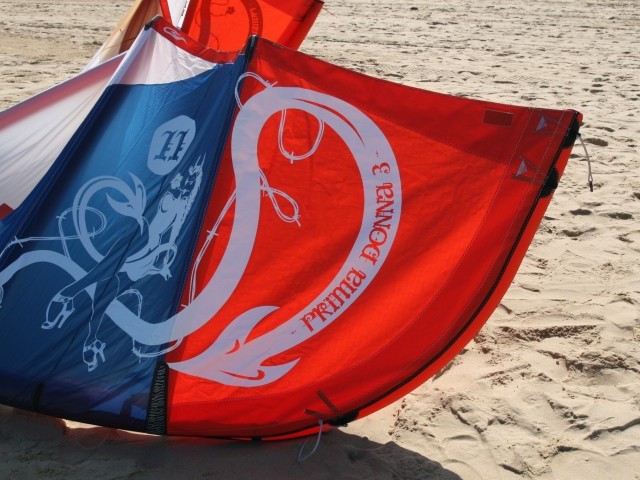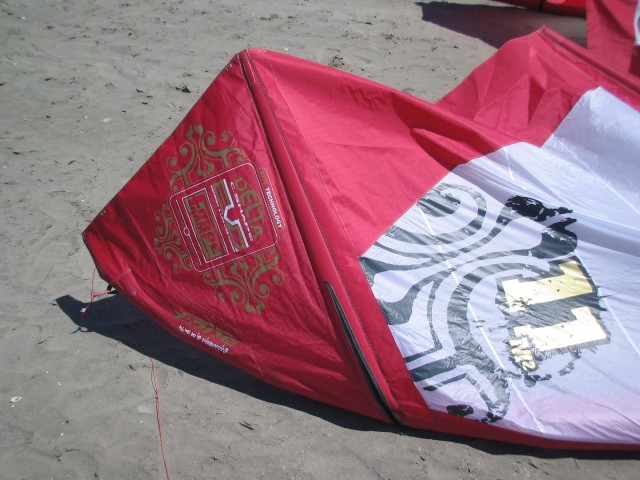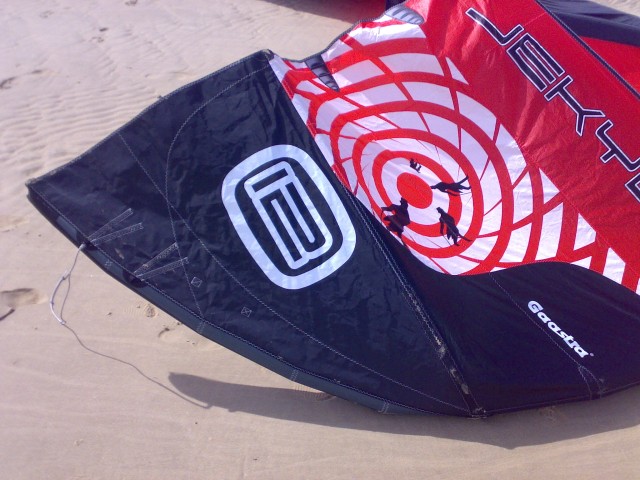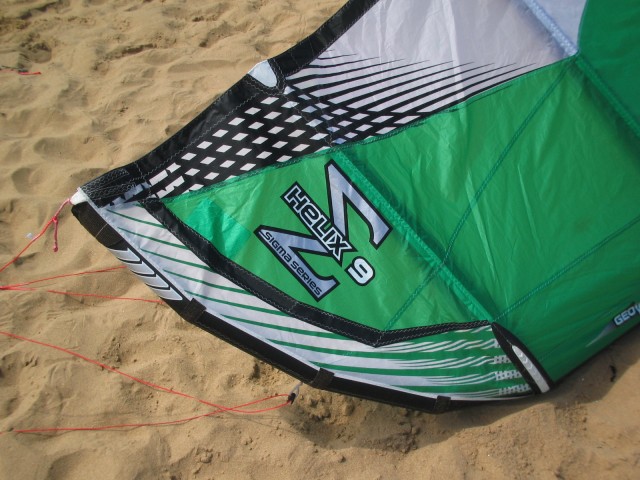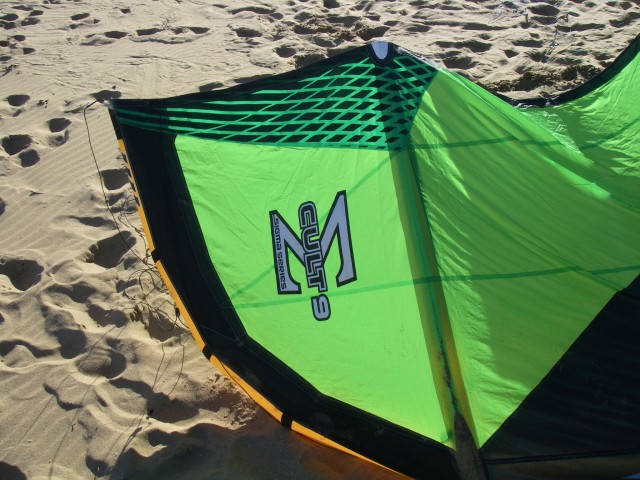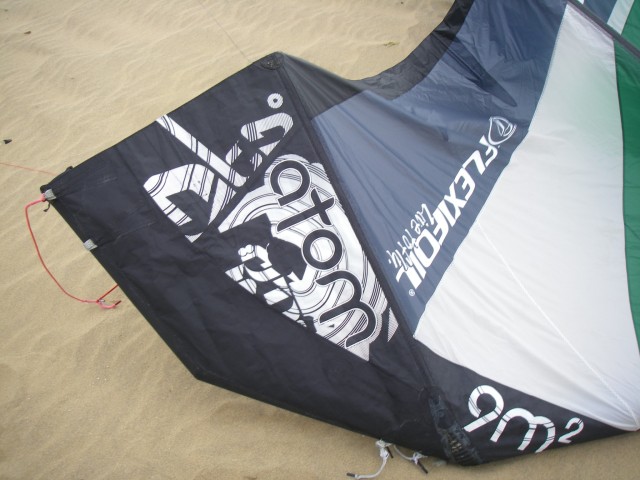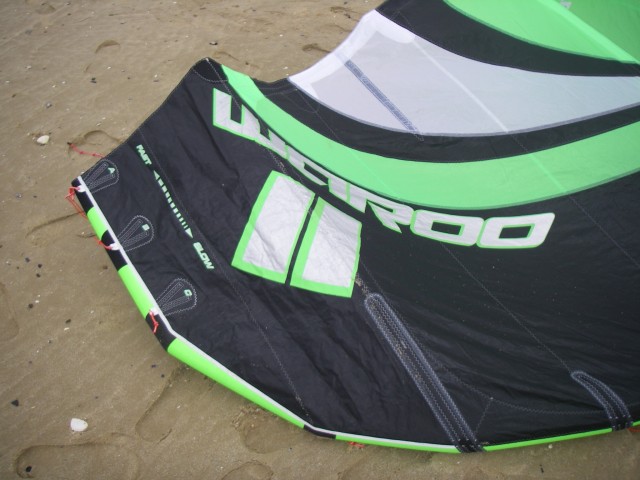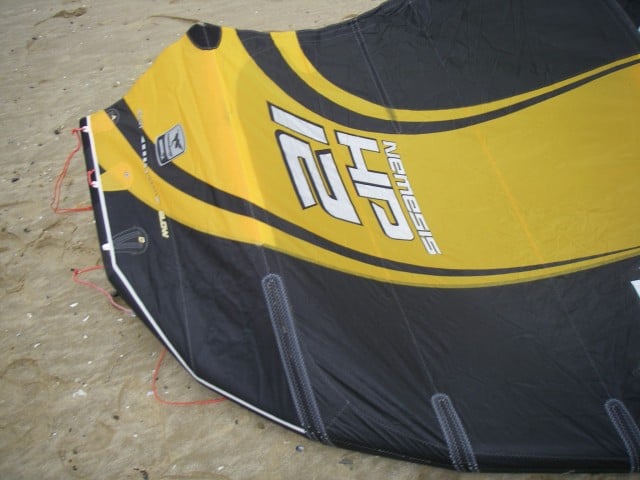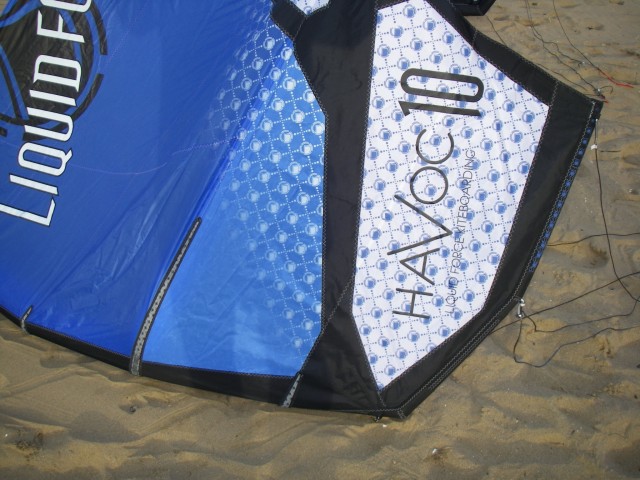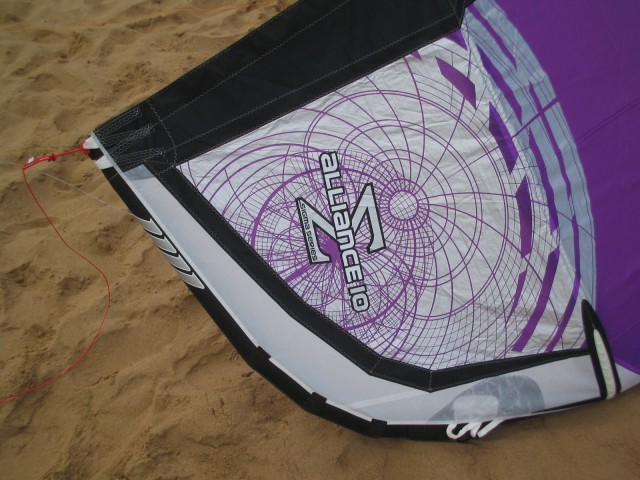At A Glance
Last issue we got our hands on the JN Prima Donna II. This issue it was the turn of the Da Vinci to be put through its paces.
The JN Da Vinci is an interesting concept. The biggest size in the range is a 10m! When you think that most brands make kites up to 14m and 16m you could be forgiven for asking where the larger Da Vinci sizes are! The answer comes in the form of the Da Vinci Bat.
The basic concept is that the smaller sizes are designed with the sorts of conditions in mind you would expect for smaller kites; gusty, punchy, stronger winds. Whilst the larger Da Vinci Bat kites are made for lighter winds and early planing.
The Da Vinci has a flatter more hybrid style arc that JN say is very stable and offers a lot of depower. The kite still flies with the reliability of a 5th line safety system. The front lines use a very short Y connection point that could constitute as a bridle, but in reality, where the bar and lines are concerned, this is much more of a 5 line set up than it is a hybrid.
The kite also utilises the floating batten technology we saw last time round, on the JN Prima Donna, with the struts being attached to the canopy with an extra piece of material so that they hang beneath the kite rather than being stitched directly to it. This enables the designers to get a really solid foil shape from the canopy of the kite. It also allows for a more aerodynamic design and a lighter construction, which will help the kite to be lively in the air.
We used the kite with the Switchcraft Bar, which works really well. The bar has ends that twist so you can change its length depending on the size of kite you are intending to use. Just unscrew the bar ends, twist and the bar is instantly ‘shorter’. You’re then all set to use the bar on a smaller kite such as this 8m. The safety release is excellent and very well engineered, plus you are provided with a large and a small chicken loop so if you want to unhook you have all the tools right there!
In the Air
These days many of the brands seem to be supplying kites with a bar that can be used across a whole range of kite sizes. In theory this is excellent as it enables you to have one bar to control all your kites and also you become familiar with the safety system.
The downside is that the kites don’t always fly properly straight out of the bag. We found the 8m Da Vinci needed an extra knot on the front pigtail about 4 inches down from the last one on there. Effectively this shortened the front lines a bit and turned the kite from something that was over sheeting into the kite it was designed to be. It is worth mentioning because, if you didn’t know too much about kites and rigging them, you could end up with a kite that doesn’t fly the way it is intended to and you wouldn’t get the best out of it.
Once set up correctly the JN is quite a kite to behold. The first thing that will strike you is the stability of the foil shape. After a very gusty, windy session it wasn’t just the rider underneath who was commenting on this. The other testers at the beach could see this super solid shape in the sky hardly flutter at all in conditions that were extreme to say the least. In the hands it feels very stable indeed and just keeps on pulling through the gusts.
The bar set-up comes with a stopper ball fixed in place and you can’t really dump much power with it in this position. It is part of the reason why the kite doesn’t flutter. If you maintain the stopper ball you will need to rely on the nearly forgotten technique of edging the board to spill power from the kite. Remove the stopper though and there is plenty of depower and control at your fingertips.
Jumping with the Da Vinci is easy enough; the kite really pulls you off the water and gets some impressive height. Landing the jumps at first wasn’t as simple and we found ourselves crashing hard as the timing is a little different to some other kites. After twenty minutes of riding we had it dialled in and it was great fun to fly through the air with.
The control through the bar is excellent and the responsiveness is second to none. This is no doubt helped by the 5th line C-kite style set up. When you engage the bar in a turn the kite responds instantly and positively driving power to the rider throughout, which makes it great fun in the waves!
Kite loops aren’t super powerful so it’s a perfect kite for someone looking to learn these.
In gusty windy conditions the Da Vinci really excels, and would be well suited to beginners and intermediates alike. If you are a very experienced rider looking for a kite for strong winds then the Da Vinci could be a good choice too.
For
In gusty, howling conditions the Da Vinci offers the rider a very stable platform, the responsiveness of the kite is second to none and the feel of control in the hands is very direct. Jumping is exciting and great fun and the kite is also perfectly suited to waves.
Against
You need to trim the bar before you fly the kite, which is easy enough, but important to do. The bar may be a little over engineered for some riders, but JN offer a simpler bar if you want a more freestyle orientated system. The less experienced riders will need to remove the stopper ball on the bar to enable them to have more depower.
Overall
One of the most solid kites we have flown in a while in really nasty conditions. If you are looking for a high wind, performance machine, that stands out from the crowd the Da Vinci will fit the bill. The responsiveness in the turn will put a smile on your face and the jumping will make that smile even bigger.
This review was in Issue 11 of IKSURFMAG.
For more information visit JN KitesRelated
By Rou Chater
Rou has been kiting since the sports inception and has been working as an editor and tester for magazines since 2004. He started IKSURFMAG with his brother in 2006 and has tested hundreds of different kites and travelled all over the world to kitesurf. He's a walking encyclopedia of all things kite and is just as passionate about the sport today as he was when he first started!


